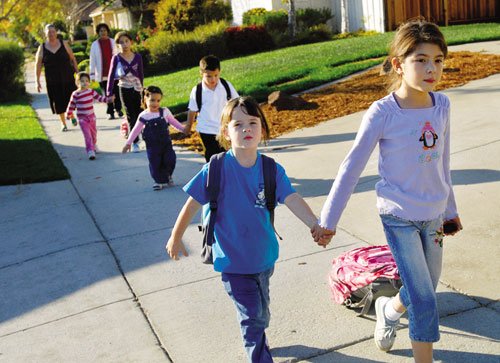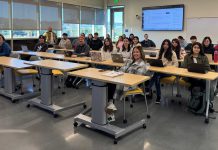Several years into the district’s implementation of
”
neighborhood schools,
”
principals are reporting a lack of diversity in their
increasingly homogenous student populations.
Several years into the district’s implementation of “neighborhood schools,” principals are reporting a lack of diversity in their increasingly homogenous student populations.
Until 2002, Gilroy’s students attended magnet schools – the district’s attempt to blend students from Gilroy’s two major demographics, low-income agricultural workers and white-collar professionals. The magnet schools attracted students from all over the district with enriched programs, breaking down socioeconomic segregation based on neighborhoods and increasing diversity. But the program required busses to transport students miles away from their neighborhoods.
“The idea was to spend less money on transportation and more money on education,” Trustee Jaime Rosso said of the switch to neighborhood schools.
“There are advantages to attending schools that your neighbors attend,” Superintendent Deborah Flores said. Additionally, neighborhood schools are more cost effective.
In 2002, the district abandoned the concept of magnet schools and began phasing in neighborhood schools in an attempt to cut transportation costs and simplify what had become a complicated enrollment issue. Many advantages came along with the change. Transportation costs went down, students were attending school with other children from their neighborhood and parents were more likely to become involved in their children’s school.
“I was happy to hear it,” said Kim Platt of the switch to neighborhood schools. Platt takes advantage of the short trip to school by making the 12 minute walk with her first grader to Luigi Aprea Elementary, which serves Gilroy’s northwestern neighborhoods bordered by Santa Teresa Boulevard, Day Road, and Hecker Pass Highway.
“When you make play dates for your kids, you know you can meet at the neighborhood playground,” said Debbie Harmer, who also has a first-grader at Luigi Aprea. Platt and Harmer’s children have known each other since they were 3 and are in the same class. The two mothers participate in the school’s fund-raising events such as a “Walk-A-Thon” and agreed that driving their children across town would add much more stress to their routines.
Despite the intensified communal ties that have accompanied the shift to neighborhood schools, Rod Kelley principal Luis Carrillo has noticed a drastic shift in his school’s population. Principal for 12 years, Carrillo reported a 20 percent increase in students who come from a low socioeconomic backgrounds in the past year. Now, about 70 percent of his students come from low-income families. With the new Las Animas Elementary now in south Gilroy, its old attendance pool has filtered into Rod Kelley, introducing 99 new English learners to the school.
“Schools were more balanced, ethnicity-wise, with the magnet program,” Carrillo said. The Latino population at Rod Kelley has risen by about 10 percent in the past year, he said.
Acknowledging the tradeoff of loss of diversity for stronger community ties, Rosso said that the district is working together to ensure that the educational needs of each child is being met, no matter which school they attend.
Principal John Perales of South Valley Middle School agreed with Carrillo on the diversity issue.
“I want my school to represent Gilroy at large,” Perales said. “I want my kids to have that experience. I see that experience diminishing at schools like South Valley … the neighborhood concept is good … but we have to be very focused in the way we draw the boundaries so that they reflect our community’s population.”
But the boundaries have already been drawn and certain ethnicities and socioeconomic groups are concentrated at specific schools. For example, Eliot Elementary School was composed of 65 percent English learners during the 2005-2006 school year with only 31 percent of students coming from families with parents who attended or graduated college. The school’s API score was 681 that year. On the other hand, Luigi Aprea’s demographic was startlingly different during the same year with only 14 percent of the student population still learning English. Its API score was 862 and 81 percent of the children’s parents attended or graduated from college.
“I’m not sure that neighborhood schools are the answer,” Carrillo said.













